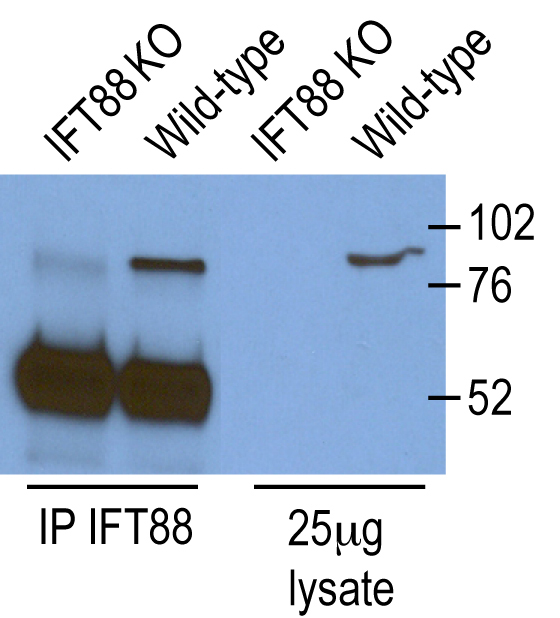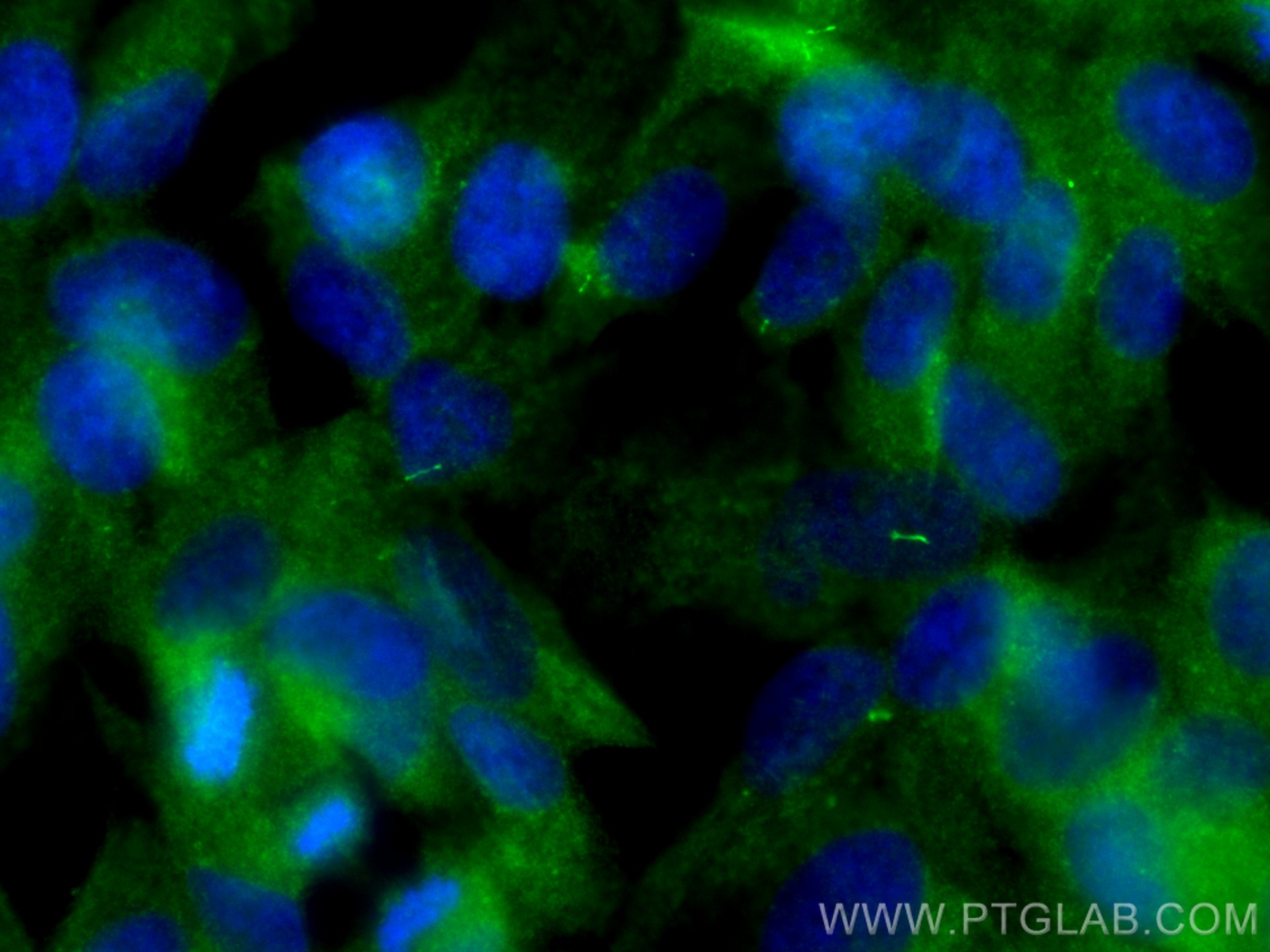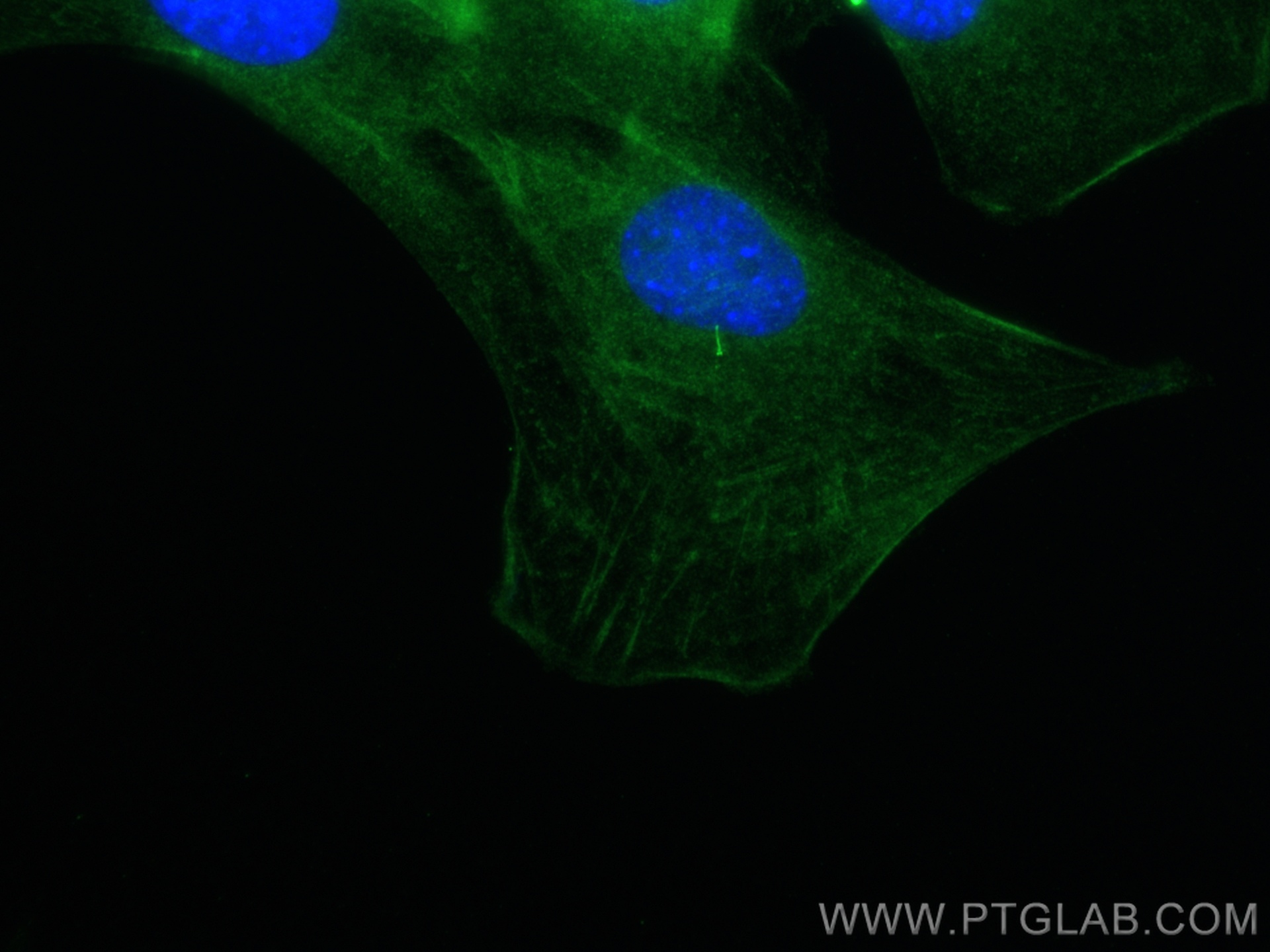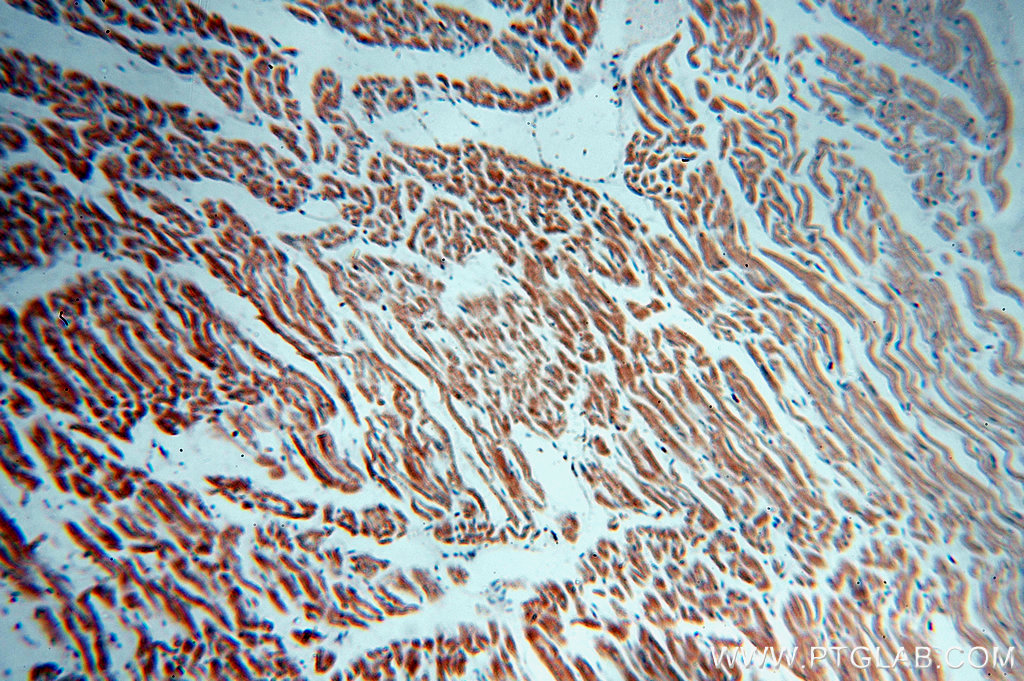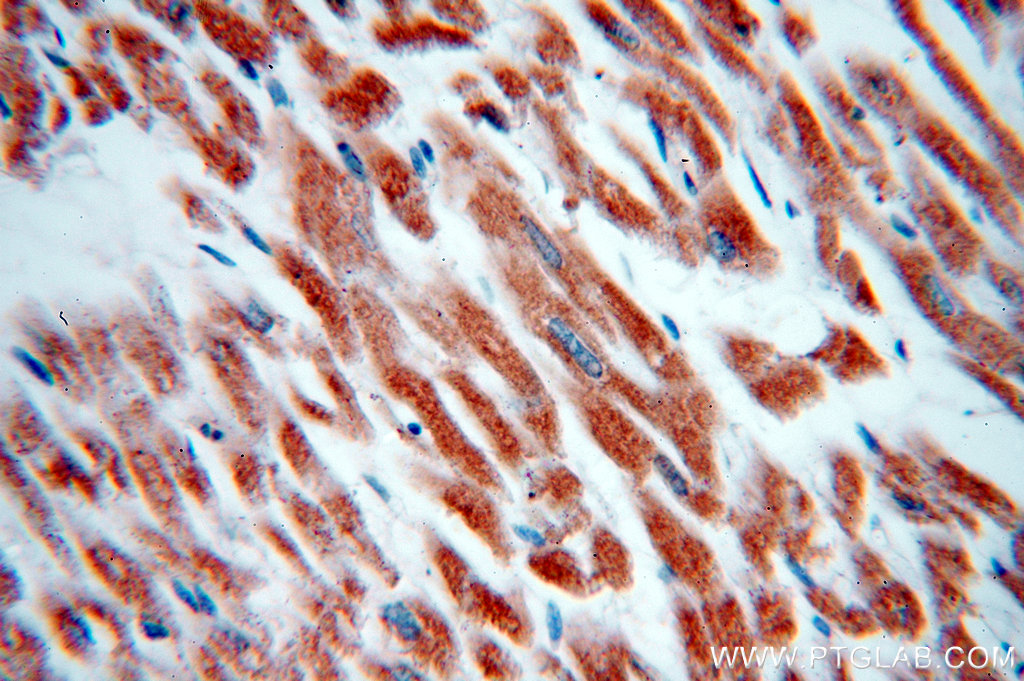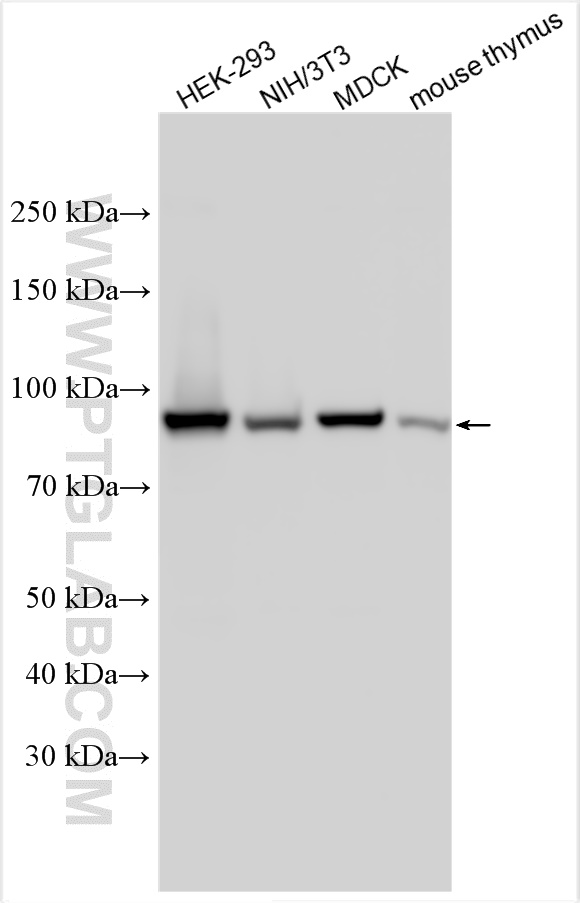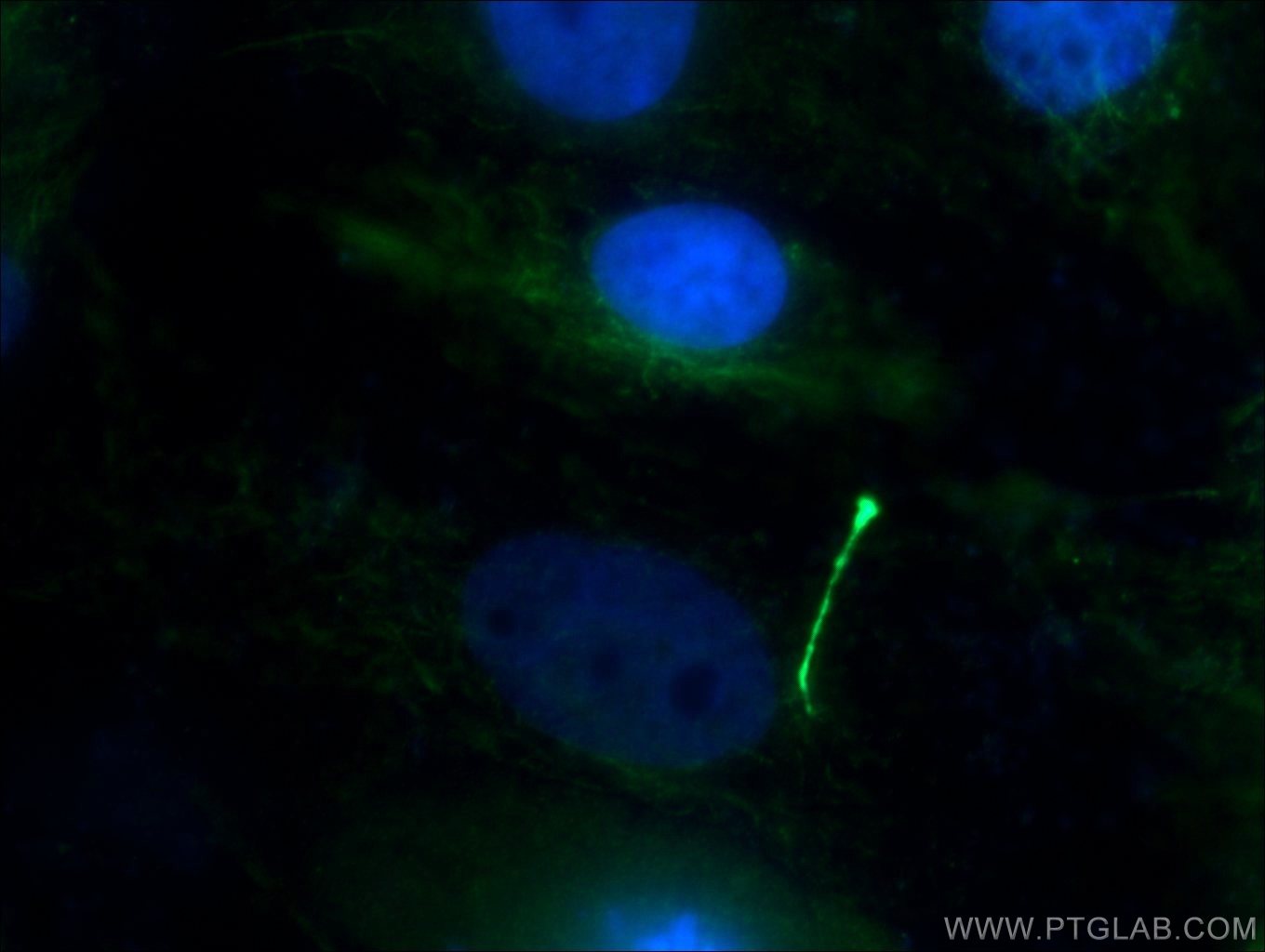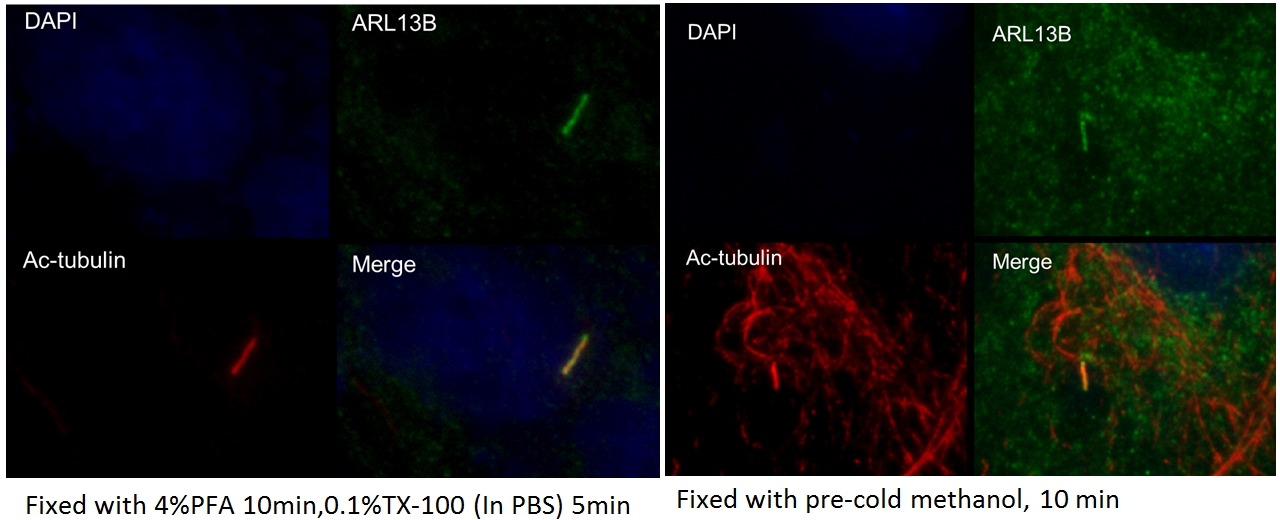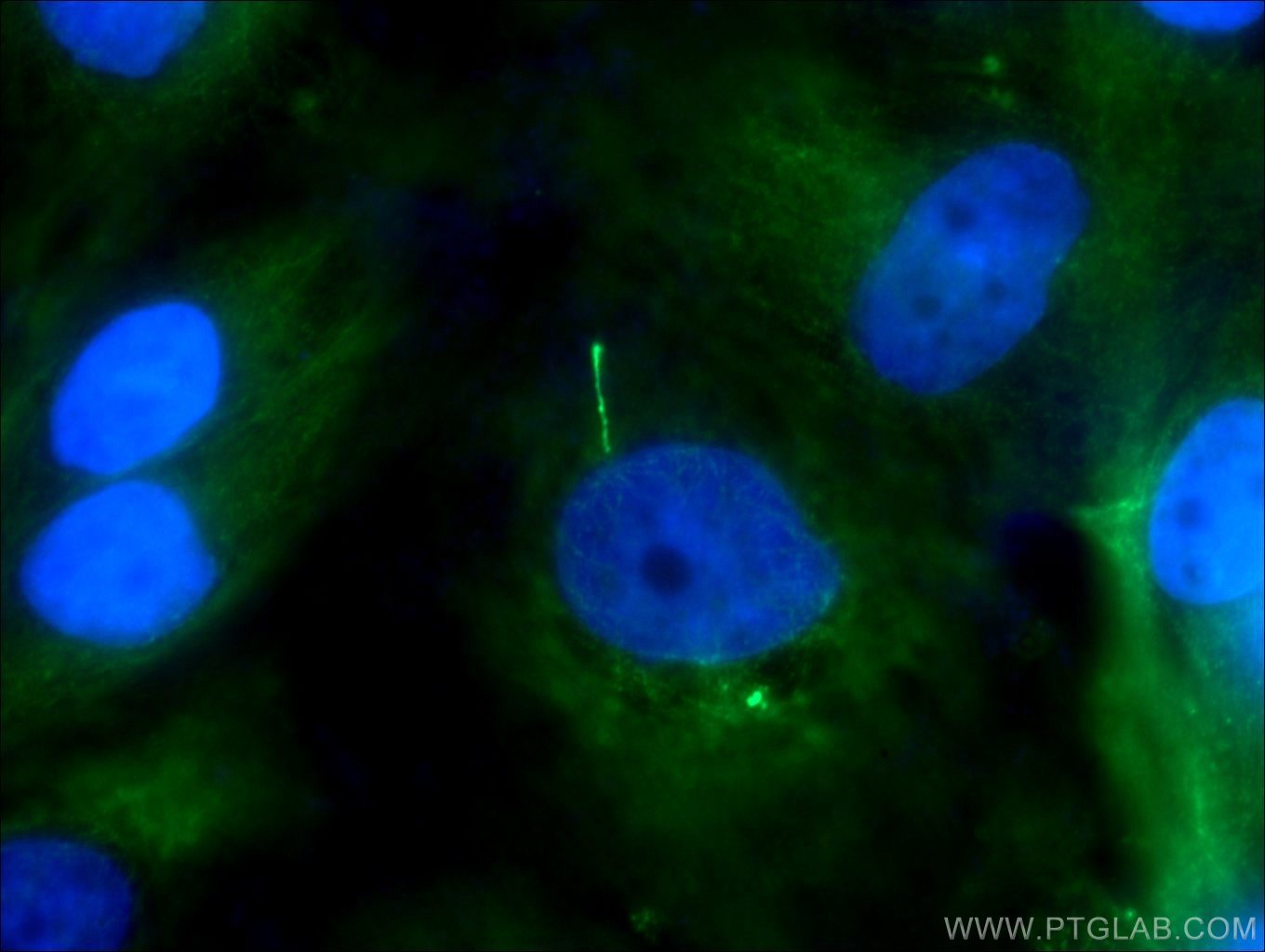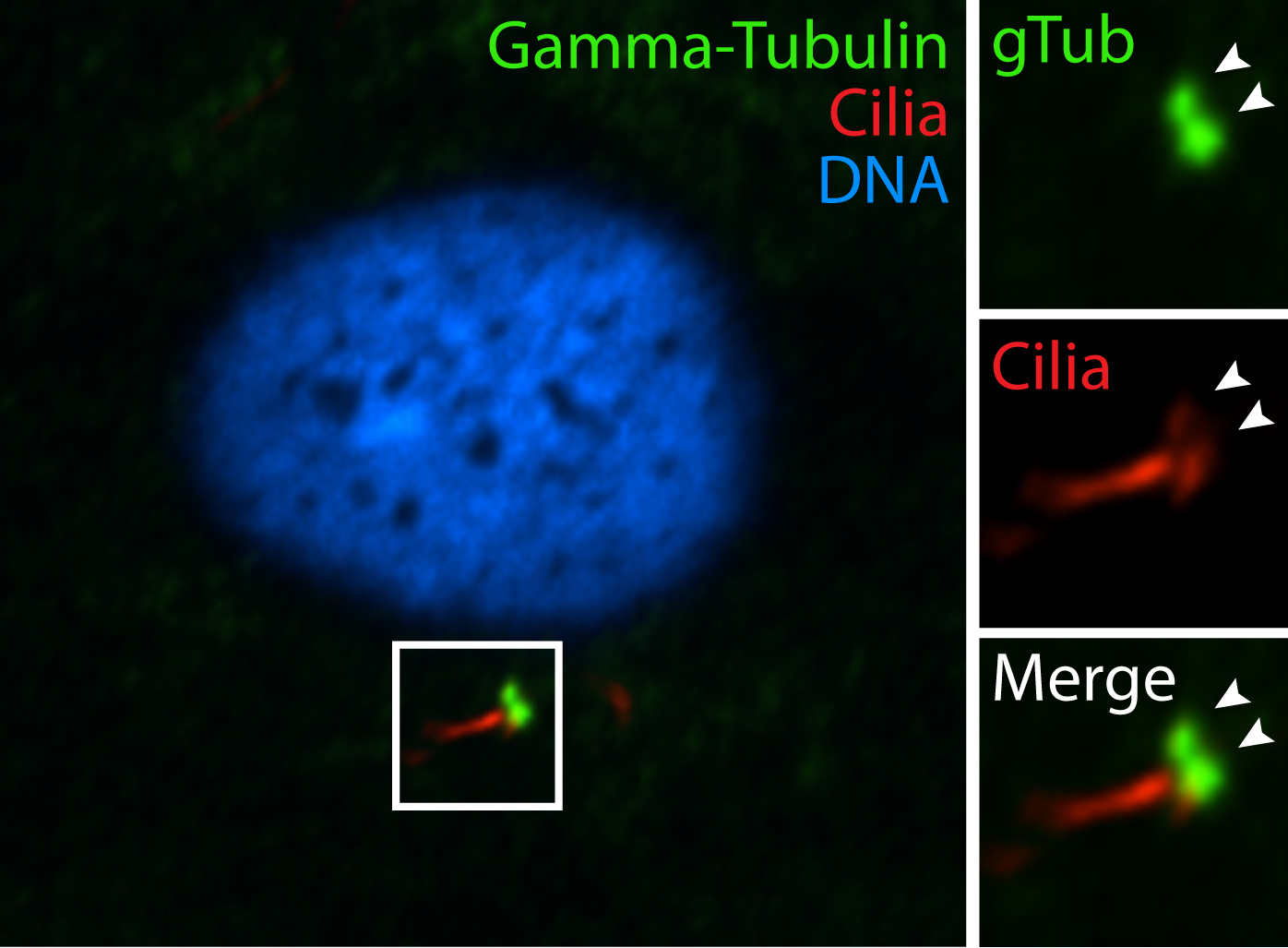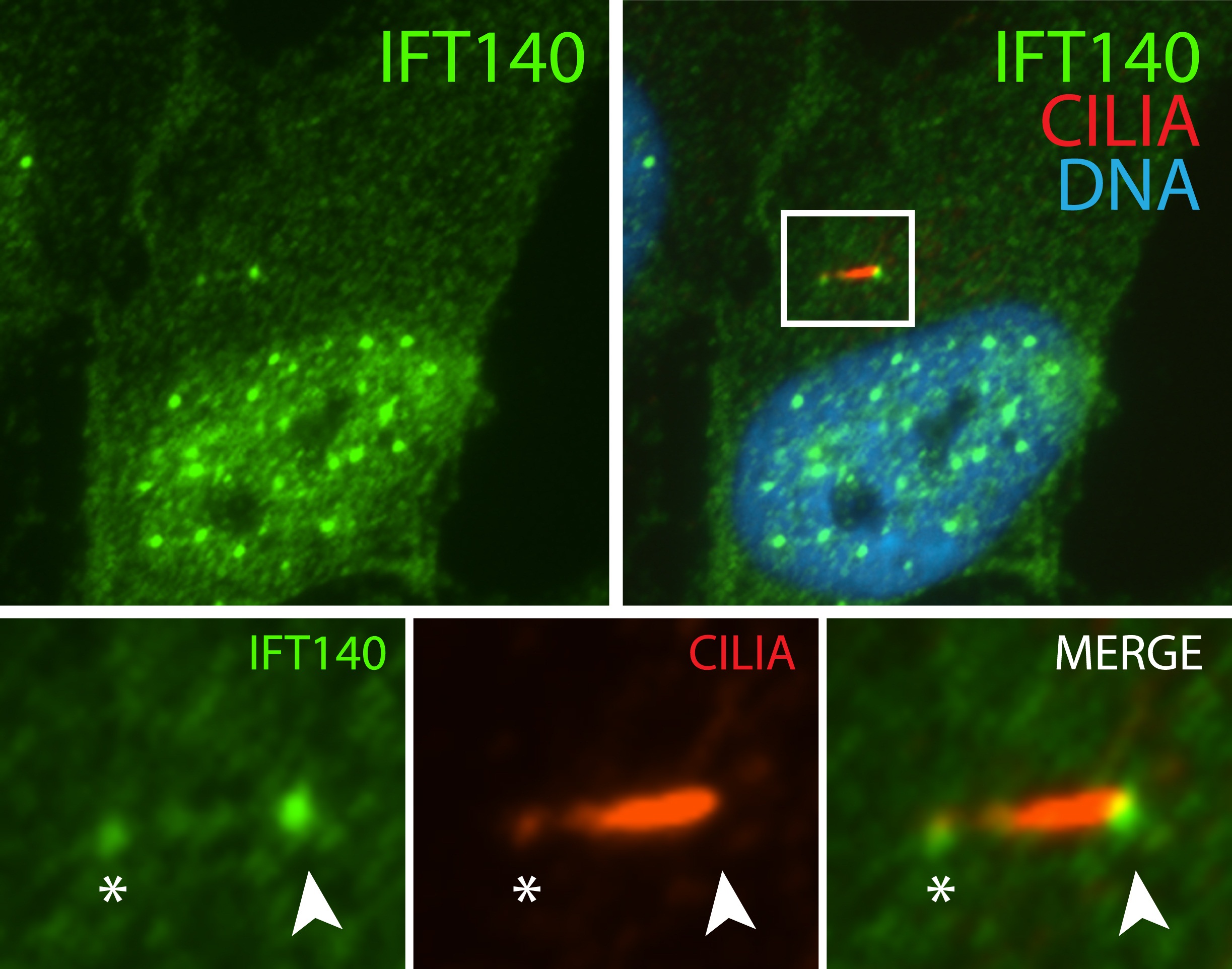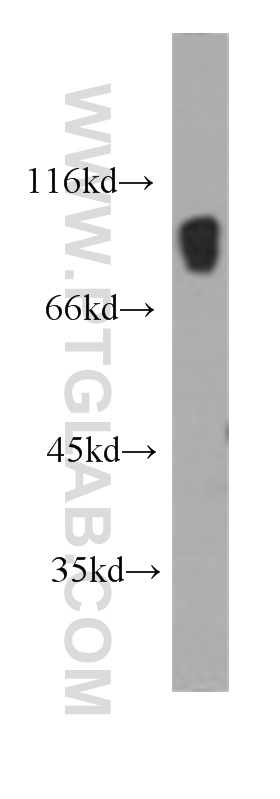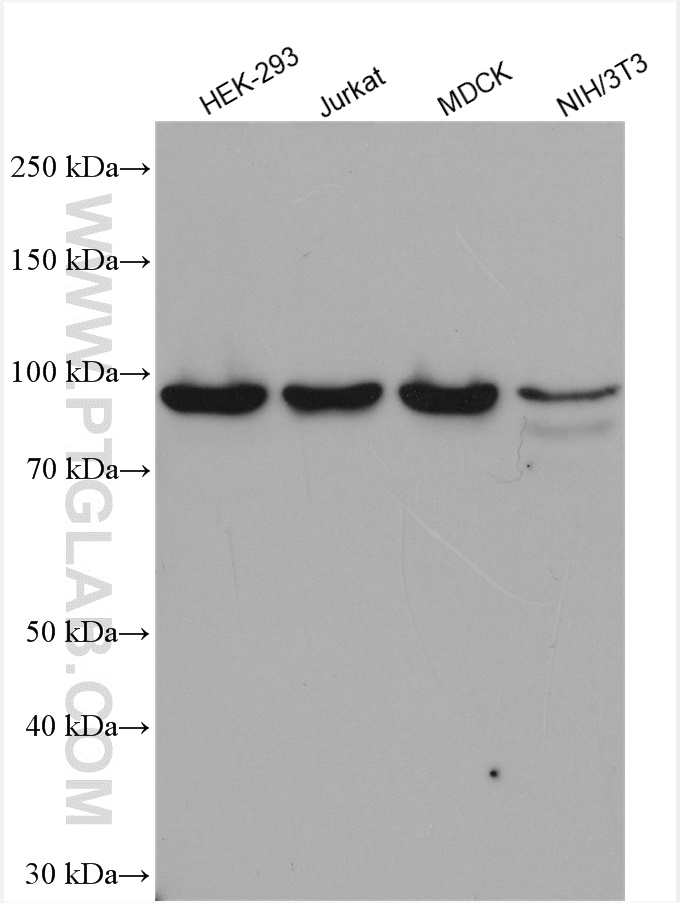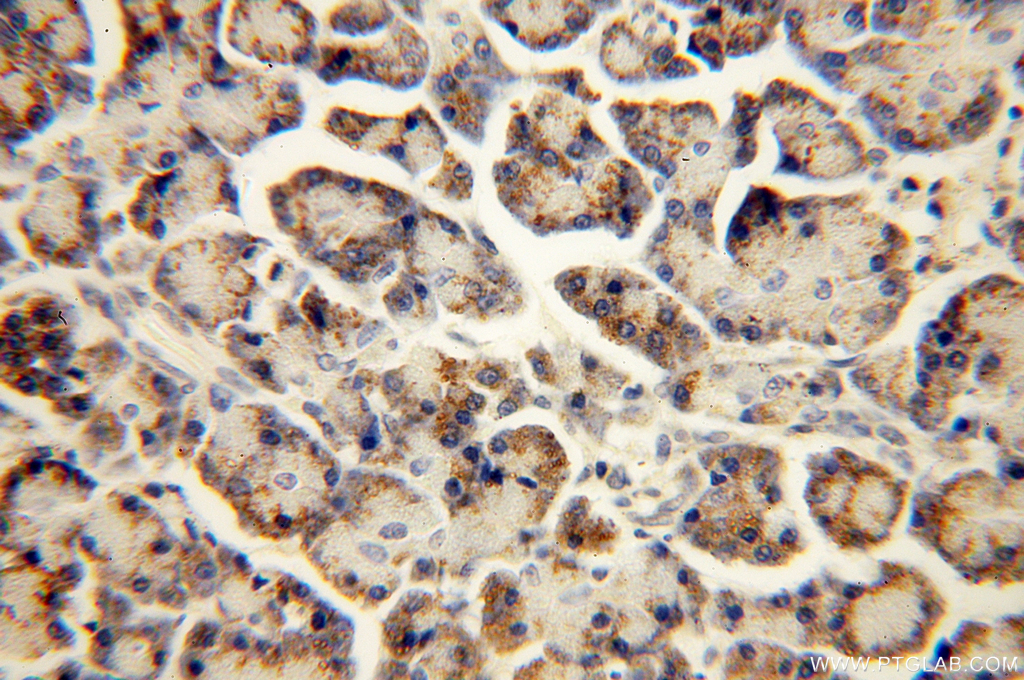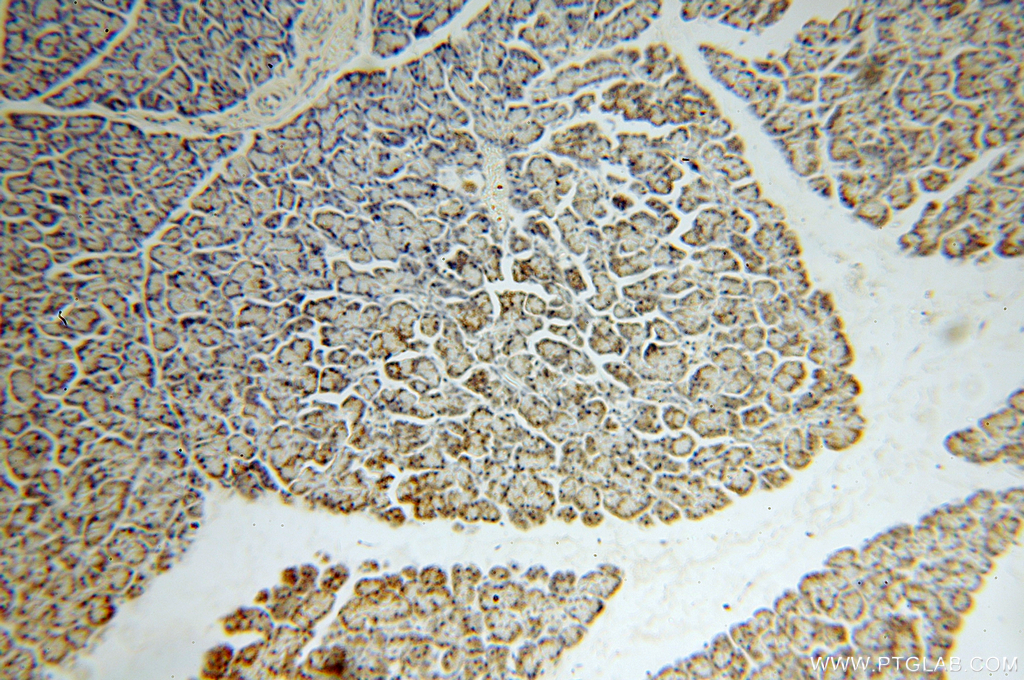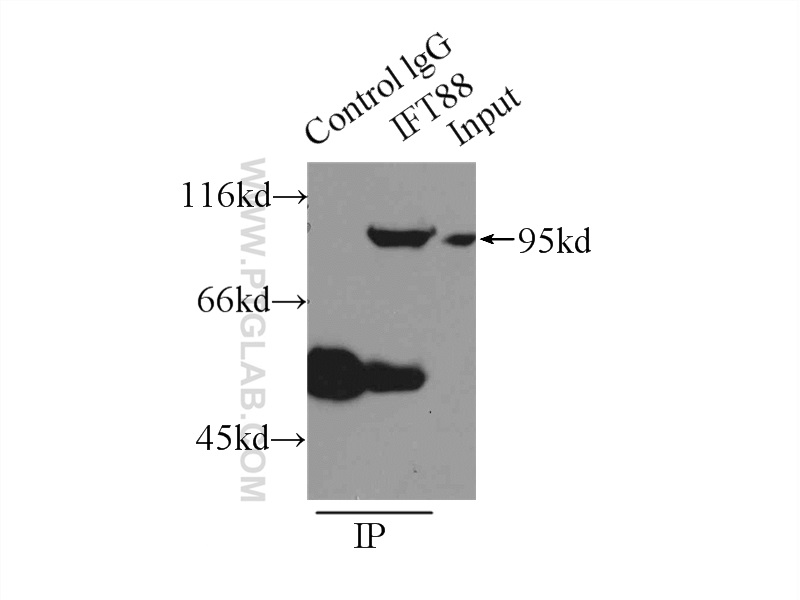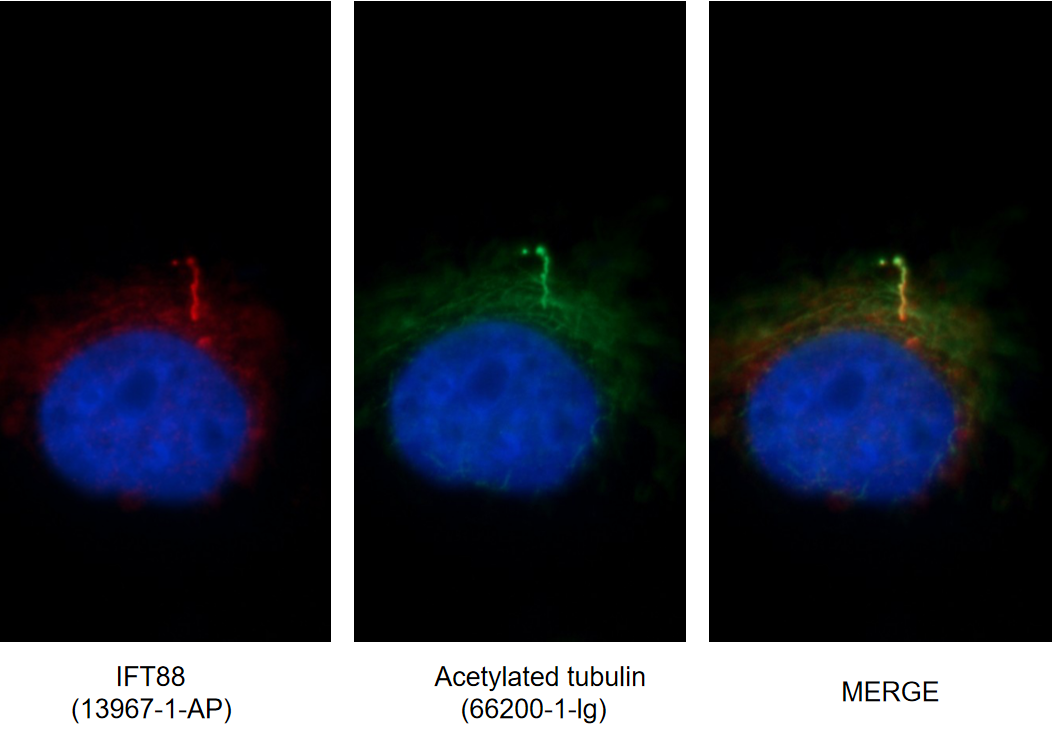- Featured Product
- KD/KO Validated
IFT88 Polyclonal antibody
IFT88 Polyclonal Antibody for IF/ICC, IHC, IP, WB, ELISA
Host / Isotype
Rabbit / IgG
Reactivity
human, mouse, rat, Canine and More (4)
Applications
IF/ICC, IHC, IP, WB, ELISA and More (1)
Conjugate
Unconjugated
337
验证数据展示
经过测试的应用
| Positive WB detected in | HEK-293 cells, Jurkat cells, MDCK cells, NIH/3T3 cells, mouse thymus tissue |
| Positive IP detected in | knockout cells and WT cells, HEK-293 cells |
| Positive IHC detected in | human heart tissue, human pancreas tissue Note: suggested antigen retrieval with TE buffer pH 9.0; (*) Alternatively, antigen retrieval may be performed with citrate buffer pH 6.0 |
| Positive IF detected in | MDCK cells, hTERT-RPE1 cells, C2C12 cells |
推荐稀释比
| Application | Dilution |
|---|---|
| Western Blot (WB) | WB : 1:2000-1:12000 |
| Immunoprecipitation (IP) | IP : 0.5-4.0 ug for 1.0-3.0 mg of total protein lysate |
| Immunohistochemistry (IHC) | IHC : 1:20-1:200 |
| Immunofluorescence (IF) | IF : 1:50-1:500 |
| It is recommended that this reagent should be titrated in each testing system to obtain optimal results. | |
| Sample-dependent, Check data in validation data gallery. | |
产品信息
13967-1-AP targets IFT88 in WB,IP,IHC,IF,ELISA applications and shows reactivity with human, mouse, rat, Canine samples.
| Tested Applications | IF/ICC, IHC, IP, WB, ELISA |
| Cited Applications | WB,IP,IHC,IF,CoIP |
| Tested Reactivity | human, mouse, rat, Canine |
| Cited Reactivity | human, mouse, rat, chicken, zebrafish, pig, canine |
| Immunogen | IFT88 fusion protein Ag4980 种属同源性预测 |
| Host / Isotype | Rabbit / IgG |
| Class | Polyclonal |
| Type | Antibody |
| Full Name | intraflagellar transport 88 homolog (Chlamydomonas) |
| Synonyms | IFT88, TPR repeat protein 10, TTC10 |
| Calculated Molecular Weight | 94 kDa |
| Observed Molecular Weight | 88-95 kDa |
| GenBank Accession Number | BC030776 |
| Gene Symbol | IFT88 |
| Gene ID (NCBI) | 8100 |
| RRID | AB_2121979 |
| Conjugate | Unconjugated |
| Form | Liquid |
| Purification Method | Antigen affinity purification |
| UNIPROT ID | Q13099 |
| Storage Buffer | PBS with 0.02% sodium azide and 50% glycerol pH 7.3. |
| Storage Conditions | Store at -20°C. Stable for one year after shipment. Aliquoting is unnecessary for -20oC storage. |
背景介绍
实验方案
| Product Specific Protocols | |
|---|---|
| WB protocol for IFT88 antibody 13967-1-AP | Download protocol |
| IHC protocol for IFT88 antibody 13967-1-AP | Download protocol |
| IF protocol for IFT88 antibody 13967-1-AP | Download protocol |
| IP protocol for IFT88 antibody 13967-1-AP | Download protocol |
| Standard Protocols | |
|---|---|
| Click here to view our Standard Protocols |
发表文章
| Species | Application | Title |
|---|---|---|
Science Apical abscission alters cell polarity and dismantles the primary cilium during neurogenesis. | ||
Nat Genet A transition zone complex regulates mammalian ciliogenesis and ciliary membrane composition. | ||
Nat Genet Mutations in PLK4, encoding a master regulator of centriole biogenesis, cause microcephaly, growth failure and retinopathy. |

